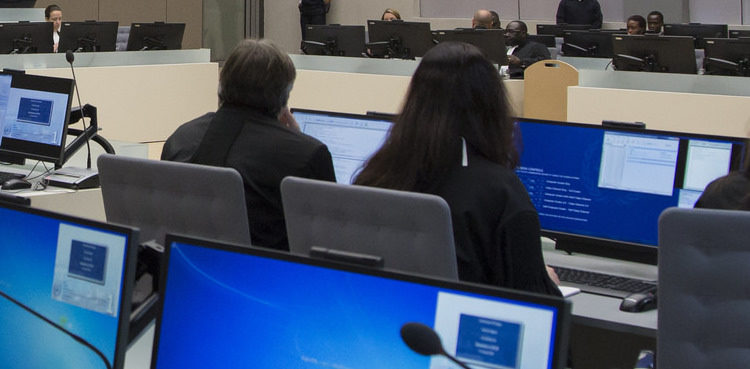By Susan Kendi
Lord’s Resistance Army fighters lived cheek-by-jowl with rebel Sudanese soldiers in military bases, trained together, and fought alongside them in South Sudan between 1994 and 1995, a witness told the International Criminal Court on May 8, 2017.
Prosecution Witness P-0142 told the ICC’s Trial Chamber IX, which is trying former LRA commander Dominic Ongwen for war crimes, about a time when the LRA were attacked while in Jebellin, Sudan, by Ugandan government forces and described working with Sudanese soldiers to repel the attack.
The Sudan People’s Liberation Army, which had the Dinka as one of the dominant ethnic groups, had a base by the name Forty-Two, named after 42-kilometre distance to the base. The relationship between the two rebel groups changed when the SPLA entered into partnership with the Ugandan army. Ugandan government soldiers attacked the LRA in Jebellin, Sudan.
The LRA had a base a Jebellin where they openly farmed and received firearms training.
“As a soldier, I dismantled a gun and assembled it,” Witness P-0142 told the court. LRA weapons training included grenades, RPG, SPG 9, SMG gun and a B10, which is also known as a recoiler.
Witness P-0142 received further training on intelligence gathering in Juba for a month on how to gather information on troop movements, how soldiers should be and how to approach civilians when one meets them.
The witness said he was recruited into LRA intelligence training after his Lapwony let him live with a person in intelligence. He was subsequently the intelligence officer, the highest-ranking officer in the brigade. His job was to collect information, put it together and forward it to his superior. The overall intelligence officer in the LRA stayed with Kony.
The LRA would gather information by moving on their own, persuading and asking civilians on the situation in area they were heading to and whether or not there were soldiers.
After the training in Sudan the Witness P-0142 started as an RCM, Regiment commissioner officer and then a second lieutenant.
“I was training our soldiers in my brigade … I was an RCM [Regiment Commissioner] to guide them on how to march,” the Witness P-0142 told the court.
Witness P-0142, a former Terwanga Battalion intelligence officer, was testifying under cross-examination by lawyers for Ongwen. Terwanga is one of the battalions in Sinia, the brigade that Ongwen is alleged to have commanded. He is testifying under court protective measures that include voice distortion, face pixilation on the video screen, and use of a pseudonym.
While the LRA fighters were in Sudan, their leader, Joseph Kony, organised prayers without giving a specific date or time. It was undefined and varied, and the prayers would be held in the morning, mid-day or evening according to the time he called out.
While the LRA was in Sudan, everyone in the bush was required to attend the prayers.
Ongwen’s lawyer, Thomas Obhof, questioned the witness about how LRA boss Joseph Kony acted when he was possessed by spirits.
“If you find Kony in front of people with red eyes he is possessed … I have not seen Lakwena but I know when they (LRA fighters) talk about Lakwena, they are speaking of when Kony is possessed with spirits,” Witness P-0142 told the court.
A possessed Kony would neither be laughing nor joking. There was a change in his character, from being happy and normal. He would speak Acholi, and at times in English. He had someone who would take notes and transcribe everything for the LRA fighters.
After returning to his normal self, Kony would reportedly recall everything he talked about when possessed and he had notes taken down so that he could review them.
Kony told the LRA fighters that Lakwena is a messenger for the angels and that his role was to relay or convey their message.
There were several spirits that Kony was possessed by several spirits and one included that of Mama Sili Silindi. This was also the name of one of Kony’s wives but the witness said he did not know where she came from.
Kony would also be possessed by the spirit of Juma Oros, Ing Chu and Who Are You. When Obhof asked him about Bianca, Jim Brickey and Silver spirits the witness told the Court that he did not recall hearing about the spirits mentioned to him. He reportedly foresaw and predicted the future and sometimes his predictions came true. An example, according to the witness, was when Kony pointed at some senior officers and other low ranking officers and said that they would all escape and come back to fight him.
Kony also predicted a battle for which he asked the fighters to prepare. He predicted that war would be waged at the location occupied by the LRA and it came to pass, with the fighters being dislodged.
Obhof questioned the witness about what he thought of Kony’s predictions, and whether they were authentic or he had an inside man among the LRA fighters. Kony would work on his own and make a decision, and then the senior commanders would share and implement his decision, meaning he made the decisions independently without the fighters’ help.
Later, Obhof asked the witness about the LRA expedition in Teso. Witness P-0142 said he went to Teso around the time that Tabuley died. The LRA was in Teso for a few months at the time. The LRA fighters moved in groups, one advanced, another followed and a third retreated.
Questioned if Ongwen went to Teso, the witness said there was a little confusion around Ongwen and Buk Abudema at that time since that was the period that there was a change of command in then brigade but they both went to Teso.
The outgoing Sinia brigade commander Buk Abudema led Sinia fighters to Teso as Dominic Ongwen, the appointed Sinia commander joined the convoy later on.
Ongwen took the position of a brigade commander in the Sinia Brigade and Buk Abudema was taken to the control alter.
The LRA soldiers in the Sinia Brigade went to Teso with Buk Abudema as Dominic Ongwen followed later.
As the LRA fighters were going to Teso, the outgoing Sinia brigade commander Buk Abudema travelled with the Sinia brigade fighters as the appointed Sinia Brigade commander Dominic Ongwen joined them afterwards.
Obhof asked the witness to describe the behaviour of rivers in Uganda during the dry and rainy season, and the agricultural production seasons.
When the water in the rivers is low, one can cross from any point. The dry season starts in mid-December, January or February, and farmers would start burning and preparing the fields for planting.
The witness said the best ripening season for mangoes is May to June. Groundnuts take about three months to mature, and grounds are planted twice in August and September.
Obhof asked the witness to use mangoes, groundnuts or agricultural product seasons to describe times whenever he could not recall the month or the year.
The eldest of the soldiers Witness P-0142 trained in his Sinia Brigade was 18 years but most of the others were about 15 and 16 years old.
Sinia had three battalions — Terwanga, Oka and Siba.
Around 2003, Laum Isaya commanded Terwanga Battalion, Oka was under Ancellam Ben and Siba was commanded by Ocan.
“Ocan Labongo was an intelligence officer of Gilva.” Then witness explained.
When a battalion commander was injured or unavailable, the two intelligence commanders would take over command.
Witness P-0142 said Buk was Sinia brigade commander in 2003 between January and June 2003 but Ongwen came and took over. The Terwanga brigade commander in 2003 was Lieutenant Oyenga.
The Witness P-0142 first saw Ongwen when he was abducted into the LRA and after being a brigade commander he saw Ongwen in the meeting it took place in Uganda though he does not recall the place.
“Ongwen was in control alternate as an operation commander before he came to Sinia Brigade,” the Witness P-0142 said.
The prosecutor questioned the Witness P-0142 on his knowledge on the attack at Odek, although he had not participated in it.
The commander that went to Odek: Acellam Ben, Okwee and other commanders that he could not recall but said they were in his statement.
The soldiers that attacked Odek came from the Sinia brigade, in which Witness P-0142 served.
Witness P-0142 does not know how the Odek attack was planned but saw soldiers were stationed and moving to Odek.
LRA fighters were gathered together to go and “work”. In the LRA, work could mean an attack, battle or food collection.
Ongwen selected commanders that went to Odek since he was the person in charge at that time and they came from the three battalions of the Sinia brigade.
The standby force, which was composed of over 100 LRA fighters, was chosen in a systematic manner. “If in your group you are 10 people, they (LRA commanders) chose four or five people. Sometimes they called in a gathering and times they sent for people to be called,” Witness P-0142 explained to the Trial Chamber IX of the ICC.
Whenever the LRA fighters were going to “work” they were briefed.
The Odek briefing was given in a loud voice and Witness P-0142 could hear from a distance. After briefing the standby force moved to implement their duties.
Witness P-0142 heard his commander, Okwee, tell him that there was work though he was not given the particulars.
“What one of the soldiers under me told me is that they (the standby force) carried food and found LMG gun. There were few civilians, they came with some children … I cannot remember the number now… They were a few … fewer than five,” Witness P-0142 told the court.
The fighters under Witness P-0142 also told him that they had attacked Odek and the government officers fled leaving them to loot food.
During the Odek attack, he said, he and Ongwen had remained in their position and stayed there the whole day until the standby force sent to Odek returned.
The prosecutor asked Witness P-0142 whether he was with Ongwen each hour of that day but he told the Trial Chamber IX of the ICC that Ongwen was a senior commander and he could not stay close to him but that he maintained his position after the standby force had left.
After the LRA fighters returned from Odek and as it was after attacks, the overall person came and gave his report to Ongwen.
The prosecutor requested court permission to consult her colleagues on some questions that she was about to address to the Witness P-0142 in question.
She (The prosecutor) went ahead to read some names to the Witness P-0142 asking him which of the names went to attack Odek.
There was: Captain Lakenya Labongo who the Witness P-0142 said that he left for Odek, but when asked on Captain Alex Ocaka, Okene Michael, Kobi Bongo, Ocen Garang, Odong Nelson Awiri and Walter Komakech the Witness P-0142 said that they did not go or that he could not recall.
After attacking Odek, the LRA fighters abducted some civilians. The civilians were untied, dressed in their own dresses and not in military attire. The reason for abduction in the LRA was to increase the number of the fighters.
The prosecutor asked Witness P-0142 about the attack on Lukodi, in which he participated as a standby force member, how it happened and the dressing of LRA fighters selected as standby for the attack.
“In the bush, you put on anything you feel like … You could wear a military uniform on top and civilian trousers since we did not have enough uniforms,” Witness P-0142 told the court.
While going to attack Lukodi camp, the standby force walked for the entire day, stopped and prepared meals before arriving the following day.
Before heading to Lukodi, the standby force had met civilians who gave them information on what to expect.
Captain Ocaka who was the overall commander gave the standby force highlights on how to approach Lukodi.
The standby moved in a single line but when drawing close to Lukodi they lined up again the armed ones in front and the unarmed LRA fighters behind.
When going for operations in the Lord Resistance Army (LRA) they was no consideration of the gender that man should take the front and the women behind, a fighter was a fighter.
In the Lukodi attack there were both men and women but those armed and in the front line were men.
The standby arrived at Lukodi at around 6:45 and the government soldiers started shooting at them and they returned the fire.
In the LRA most times when the standby was close to the target location the commander in charge would indicate by a show of hands but if there no sign one waited for any firing and that is when one engaged.
“We went to the school where the government soldiers were. We faced them at the barracks in this school…We lined up and we had some good distance between us.
It was difficult to know who started the fire. The exchange did not take long since the soldiers fled…I was at the frontline and I saw them fleeing to the civilians camps,” the Witness P-0142 told the presiding judge, Bertram Schmitt.
After the soldiers fled, the unarmed LRA standby force scattered to loot food from the camp. The armed men accompanied them.
“The civilians would hand over the food to the rebels (LRA) as they said, ‘My child have this’, and for those who would resist, the food was taken by force,” Witness P-0142 said.
The civilian camps were between 100 and 500 metres from the barracks. When the government soldiers (UPDF) fled, the LRA standby searched the barracks and set them on fire and plus the houses of the civilians.
During the battle it was hard to determine whether the LRA commanders were on the right or on the left, though they were on the frontline. Some LRA fighters followed the soldiers who fled to the camp and started shooting. Witness P-0142 heard that the Lukodi camp was attacked and many civilians died in the crossfire.
The LRA fighters took between 30 and 40 minutes in the Ugandan government soldiers barracks.
Witness P-0142 said the day after the Lukodi attack, he heard on the radio during news that some civilians died although he did not know the number.
“Let’s say, the LRA went and attacked the government soldiers, and civilians were killed and some houses burnt. I used a small radio set, I did not clearly establish the radio. I think it must be a radio in Gulu,” Witness P-0142 said.







